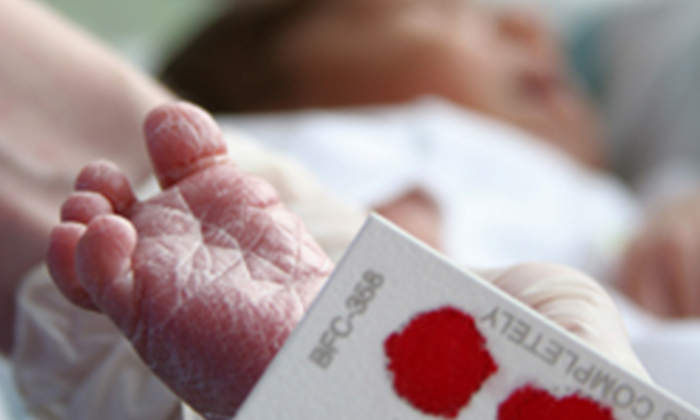
Incidence
The incidence of primary carnitine deficiency in the general population is approximately 1 in 100,000 newborns. In Japan, this disorder affects 1 in every 40,000 newborns.
The incidence of CDSP varies depending on ethnicity. In Japan, the incidence of CDSP is approximately 1 in 40,000, whereas the frequency in Australia is approximately 1 in 120,000. In the Faroe Islands, the prevalence is 1/1,300 and the incidence is 1/720.
Estimated incidence in Pakistan is not known.
What is Carnitine Deficiency (CD)?
Primary carnitine deficiency is a condition that prevents the body from using certain fats for energy, particularly during periods without food (fasting). Carnitine, a natural substance acquired mostly through the diet, is used by cells to process fats and produce energy.
It is considered a fatty acid oxidation condition because people affected by Carnitine Deficiency are unable to break down certain fats. This can result in a build-up of unused fatty acids. If untreated, CD can cause brain damage or death. However, with early detection and treatment, individuals with CD can often lead healthy lives.
Other names for this disorder are:
- Carnitine Transporter Deficiency
- Carnitine Uptake Defect
- Carnitine Uptake Deficiency
- CUD
- Renal Carnitine Transport Defect
- Systemic Carnitine Deficiency
Clinical Description
Disease onset typically occurs in infancy between the ages of 3 months to 2 years. Infants often present with hypoketotic hypoglycemia, poor feeding, irritability, lethargy, and hepatomegaly, triggered by fasting stress or common illnesses including gastoenteritis and respiratory tract infections. Roughly half of clinically presenting patients present with muscle hypotonia and progressive childhood cardiomyopathy leading to heart failure. Anemia is sometimes observed as carnitine plays a role in red blood cell metabolism.
Adulthood presentation is associated with minor symptoms like fatigue and decreased stamina but dilated cardiomyopathy and arrhythmias and sudden cardiac death have also been reported. Asymptomatic adults are also described.
During pregnancy, minor symptoms as well as cardiac arrhythmias can worsen.
Causes
Primary carnitine deficiency is inherited in an autosomal recessive pattern, which means both copies of the gene in each cell have mutations.
More causes or triggers of carnitine deficiency include the following:
- Inadequate intake (eg, due to fad diets, lack of access, or long-term TPN)
- Inability to metabolize carnitine due to enzyme deficiencies (eg, carnitine palmitoyltransferase deficiency, methylmalonicaciduria, propionicacidemia, isovalericacidemia)
- Decreased endogenous synthesis of carnitine due to a severe liver disorder
- Excess loss of carnitine due to diarrhea, diuresis, or hemodialysis
- A hereditary disorder in which carnitine leaks from renal tubules
- Increased requirements for carnitine when ketosis is present or demand for fat oxidation is high (eg, during a critical illness such as sepsis or major burns; after major surgery of the GI tract)
- Decreased muscle carnitine levels due to mitochondrial impairment (eg, due to use of zidovudine)
- Use of valproate
- The deficiency may be generalized (systemic) or may affect mainly muscle (myopathic).
Testing and Diagnosis
Testing
Newborn screening program for primary carnitine deficiency can identify affected patients at risk for this condition before irreversible damage occurs.
Diagnosis:
Heterozygous carriers usually have about 50% carnitine transport activity in fibroblasts and can have borderline low plasma carnitine levels. However, normal plasma carnitine levels have been reported in some heterozygous carriers. Because the diet, which provides about 75% of the daily requirement of carnitine, may play a role in modulating carnitine levels, plasma carnitine levels are not a reliable indicator for heterozygous carrier status; thus, either molecular testing of SLC22A5 or fibroblast carnitine transport assay is needed to determine carrier status.
- In neonates: Mass spectrometry
- In adults: Acylcarnitine levels
In neonates, carnitine palmitoyltransferase deficiency is diagnosed using mass spectrometry to screen blood. Prenatal diagnosis may be possible using amniotic villous cells.
In adults, the definitive diagnosis is based on acylcarnitine levels in serum, urine, and tissues (muscle and liver for systemic deficiency; muscle only for myopathic deficiency).
- Diagnosis is based on a finding of very low plasma free and total carnitine concentrations (<5-10 micromol/L) and
- Diagnosis is confirmed by demonstrating significantly reduced carnitine transport in skin fibroblasts or biallelic pathogenic mutations in the SLC22A5 gene.
- Also there’s reduced renal absorption of <90%. A marked renal loss of carnitine even in the presence of very low plasma and tissue carnitine concentrations is noted.
There is lipid myopathy with microvesicular lipid accumulation found in the muscle and liver as well as elevated liver transaminases and hyperammonemia.
Treatment
- Avoidance of fasting and strenuous exercise
- Dietary interventions, based on cause
Prognosis:
The prognosis is extremely good as long as oral carnitine supplementation is maintained.
Lifestyle
Carnitine deficiency due to inadequate dietary intake, increased requirements, excess losses, decreased synthesis, or (sometimes) enzyme deficiencies can be treated by giving l-carnitine 25 mg/kg po q 6 h. Carnitine therapy is the standard treatment. Oral levocarnitine (L-carnitine) supplementation of 100-400 mg/kg/day in three divided doses is usually required. Oral carnitine treatment is required for lifelong treatment of the disease.
All patients must avoid fasting and strenuous exercise. Consuming uncooked cornstarch at bedtime prevents early morning hypoglycemia.
Some patients require supplementation with medium-chain triglycerides and essential fatty acids (eg, linoleic acid, linolenic acid). Patients with a fatty acid oxidation disorder require a high-carbohydrate, low-fat diet.
References
- https://rarediseases.org/
- https://www.msdmanuals.com/
- https://www.saintlukeskc.org/
- http://www.babysfirsttest.org/
- https://www.ncbi.nlm.nih.gov/
- https://ojrd.biomedcentral.com/
- http://www.orpha.net/
- https://www.karger.com/

Leave a Reply